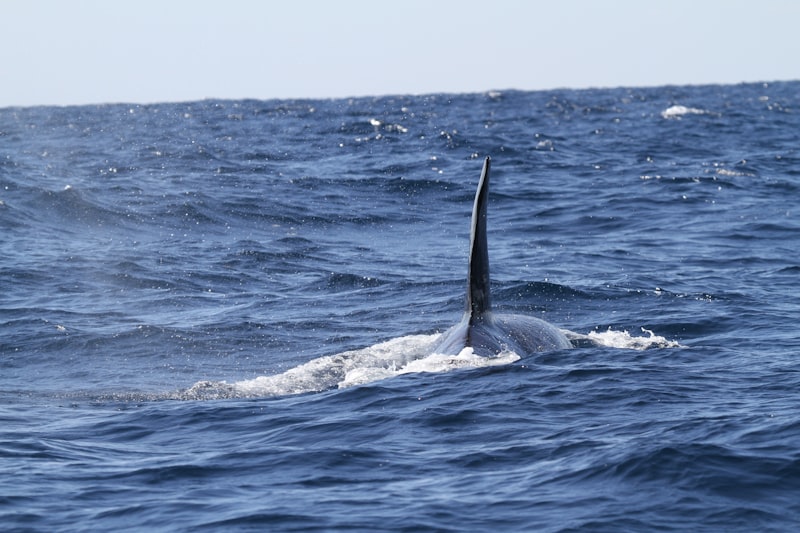Imagine a time when the seas were ruled not by fish or mammals, but by reptiles. Marine reptiles were pioneers of their time, adapting to a life aquatic long before other vertebrates followed suit. Their evolution tells a tale of resilience and adaptation, where they transformed from terrestrial ancestors to masters of the open ocean.
Take the sea turtles, for instance. These ancient mariners have roamed the oceans for over 100 million years, embodying a perfect blend of grace and tenacity. With streamlined bodies and powerful flippers, they navigate vast distances with astonishing precision, returning faithfully to their natal beaches to lay their eggs.
Then there are the marine iguanas of the Galápagos Islands, a unique species that has evolved to forage underwater, feeding on seaweed and algae. Their ability to dive deep and withstand the harsh marine environment is a testament to their adaptive prowess, proving that reptiles can excel in realms once thought exclusive to fish and marine mammals.
Even in prehistoric times, marine reptiles like the mighty ichthyosaurs ruled the Mesozoic seas. These dolphin-like predators were perfectly adapted for a life of swift swimming and hunting, showcasing the diversity of forms that marine reptiles could take in different epochs.
Today, marine reptiles continue to captivate scientists and nature enthusiasts alike. Their ability to survive and thrive in oceanic environments speaks volumes about their evolutionary success and the wonders of adaptation. From the depths of the past to the present-day shores, marine reptiles remain resilient survivors of Earth’s ever-changing landscapes.
Unveiling the Ancient Giants: How Marine Reptiles Thrived Through Evolution
In the vast depths of Earth’s history, marine reptiles emerge as true giants of evolution. These ancient creatures, unlike anything seen today, navigated ancient seas with unparalleled grace and power. From the mighty Plesiosaurs with their long necks and powerful flippers to the terrifying Mosasaurs ruling the Cretaceous oceans, each species adapted uniquely to its environment, showcasing evolutionary marvels that still intrigue scientists today.
Imagine the Plesiosaur, a creature resembling a mythical sea serpent, gliding effortlessly through prehistoric waters. With its streamlined body and four paddle-like limbs, it hunted smaller marine life with precision, its long neck possibly allowing it to surprise prey from afar. This remarkable adaptation is just one example of how marine reptiles evolved to dominate their underwater realms.
Meanwhile, the Mosasaur, often referred to as the T-Rex of the sea, dominated the late Cretaceous period. With powerful jaws lined with sharp teeth, it ruled as an apex predator, showcasing an evolutionary arms race that pushed these reptiles to develop formidable hunting strategies and adaptations for survival. Their success in diverse oceanic environments highlights their ability to thrive in changing ecosystems over millions of years.
What made these ancient giants so successful? Their ability to adapt to various niches within the oceanic ecosystem played a crucial role. From shallow coastal waters to deep-sea habitats, marine reptiles diversified into numerous species, each finely tuned to exploit specific prey and environmental conditions.
Today, uncovering the mysteries of these ancient giants fuels scientific curiosity. By studying their fossilized remains and reconstructing their life histories, researchers gain insights into Earth’s past climates, geological shifts, and the evolutionary forces that shaped life underwater. Each fossil unearthed provides a piece of the puzzle, revealing not only the physical characteristics of these reptiles but also their behaviors and interactions within ancient ecosystems.
As we delve deeper into Earth’s history, the story of marine reptiles continues to captivate and inspire awe. Their legacy serves as a testament to the enduring power of evolution and the remarkable diversity of life that has existed throughout geological time.
From Jurassic Seas to Modern Oceans: The Enduring Legacy of Marine Reptiles
Imagine diving into the depths of Earth’s ancient oceans, where colossal creatures ruled the waters with unparalleled grace and power. These magnificent beings, known as marine reptiles, have left an indelible mark on our planet’s history, their legacy echoing through millennia to shape our understanding of marine life today.
During the Mesozoic Era, which spanned from approximately 252 to 66 million years ago, marine reptiles thrived in seas teeming with life. From the iconic Plesiosaurs with their long necks and sleek bodies to the formidable Mosasaurs, resembling giant sea serpents, these creatures evolved diverse adaptations that allowed them to conquer the oceans in ways mammals and fish had not yet achieved.
One of the most fascinating aspects of marine reptiles is their evolutionary journey. Unlike their terrestrial counterparts, these reptiles ventured into the waters, adapting over millions of years to become masters of the ocean realm. Their streamlined bodies, powerful flippers, and specialized jaws equipped them for hunting and surviving in various marine environments, from shallow coastal waters to the deep open seas.
What makes these ancient reptiles so compelling is not just their size and strength, but also their ecological significance. As apex predators of their time, marine reptiles played crucial roles in maintaining the balance of marine ecosystems. By preying on fish and smaller marine organisms, they regulated populations and influenced the evolution of other species.
Fast forward to the present day, and the legacy of marine reptiles continues to captivate scientists and enthusiasts alike. Fossil discoveries around the world provide invaluable insights into their biology, behavior, and the environmental conditions of ancient seas. Each fossil unearthed is a piece of the puzzle that helps us reconstruct the vibrant tapestry of life during prehistoric times.
The story of marine reptiles is a testament to the resilience and adaptability of life in Earth’s oceans. From the towering Ichthyosaurs to the armored Placodonts, these creatures shaped the evolutionary trajectory of marine life and left behind a legacy that continues to inspire awe and wonder.
Exploring the Depths: The Evolutionary Secrets of Marine Reptiles
Marine reptiles, unlike their terrestrial counterparts, have adapted to thrive in the ocean’s vastness. From the mighty ichthyosaurs to the formidable plesiosaurs, these creatures ruled the seas millions of years ago. Their evolutionary journey is a testament to nature’s innovative prowess, shaping them into efficient predators and survivors.
One of the most intriguing aspects of marine reptiles is their transition from land to sea. Imagine a time when prehistoric reptiles ventured into the water, adapting their bodies over generations to suit an aquatic lifestyle. It’s a journey akin to mastering a new environment, where limbs transform into streamlined flippers and bodies become streamlined for efficient swimming.
Take the ichthyosaurs, for example. These dolphin-like reptiles evolved from land-dwelling ancestors to become swift hunters of fish and squid. Their bodies streamlined into torpedo-like shapes, enabling them to navigate the waters with precision and speed. Such adaptations highlight nature’s ability to fine-tune species for specific environments, ensuring their survival through ages of change.
Another marvel is the plesiosaur, known for its long neck and powerful flippers. These creatures roamed the ancient seas, using their flexible bodies to dart after prey with remarkable agility. Their anatomy is a lesson in evolutionary specialization, where unique traits like elongated necks allowed them to exploit niches other marine predators couldn’t reach.
Today, studying marine reptiles unlocks not only their past but also sheds light on our understanding of evolution itself. How did these creatures manage to thrive in environments vastly different from today’s oceans? What can their adaptations teach us about resilience and survival in changing climates?
Exploring the depths of marine reptiles reveals a world where evolution crafted wonders that defy imagination. It’s a journey through time and adaptation, where ancient creatures continue to inspire awe and curiosity about our planet’s rich natural history.
Adaptation Over Millennia: How Marine Reptiles Have Mastered Evolutionary Challenges
Imagine the primeval seas, teeming with life yet fraught with challenges. Marine reptiles first ventured into these waters over 250 million years ago, navigating a world vastly different from today’s. Through epochs marked by continental shifts and climatic upheavals, these creatures honed their evolutionary prowess to thrive where others struggled.
One of the most awe-inspiring examples is the ichthyosaur, a sleek predator resembling a cross between a dolphin and a shark. Its streamlined body and powerful fins enabled it to chase down swift prey with remarkable agility, illustrating a perfect blend of form and function sculpted by millions of years of adaptation.

On the other end of the spectrum, the sea turtle presents a gentle giant of the oceans. With its sturdy shell and placid demeanor, this ancient mariner has weathered the tides of time by adapting to various ecological niches and dietary habits. From the depths of the sea to sandy shores, sea turtles have embraced diverse habitats with equal grace.
But what drives these marine reptiles to continually evolve? The answer lies in their ability to respond to environmental cues across generations. Through natural selection, advantageous traits such as enhanced swimming prowess or specialized feeding mechanisms become predominant, ensuring survival in a world of constant flux.
Consider the leatherback turtle, known for its unique soft shell and migratory habits spanning entire ocean basins. This giant among turtles has evolved a physiology capable of enduring the rigors of long-distance travel and deep dives, showcasing adaptation at its most profound.
From birth to adulthood, each generation of marine reptiles inherits a legacy of resilience shaped by millennia of trials and triumphs. As they continue to navigate today’s oceans, these creatures serve as reminders of nature’s enduring capacity for innovation and adaptation.
Beyond Dinosaurs: Marine Reptiles as the Hidden Heroes of Evolution
Have you ever wondered what lurked beneath the surface of prehistoric oceans? While dinosaurs ruled the land, another group of extraordinary creatures dominated the seas: marine reptiles. These often-overlooked champions of evolution have left an indelible mark on our planet’s history, offering a glimpse into a world vastly different from our own.

Imagine a time when colossal sea monsters roamed freely in ancient waters. Marine reptiles, unlike their terrestrial counterparts, adapted to life in the ocean millions of years ago. They evolved sleek bodies, powerful flippers, and streamlined shapes that allowed them to navigate the depths with grace and efficiency. From the long-necked plesiosaurs to the dolphin-like ichthyosaurs, each species carved out its niche in the marine ecosystem.
What makes marine reptiles truly fascinating is their diversity and resilience. Spanning over 180 million years, these creatures diversified into various forms that adapted to different marine environments. Some, like the mighty mosasaurs, grew to lengths exceeding 50 feet, ruling the seas as apex predators. Others, such as the gentle giant sea turtles, have survived through epochs, embodying endurance and adaptation.
Unlike dinosaurs, marine reptiles faced unique challenges in their underwater realm. How did they hunt? What strategies did they employ to survive in an ever-changing environment? These questions drive scientists to unravel the mysteries of their lives and understand their role in the grand tapestry of evolution.
The legacy of marine reptiles extends beyond their physical adaptations. They played crucial roles in shaping marine ecosystems, influencing the evolution of prey species and contributing to the complex web of life beneath the waves. By studying their fossils and reconstructing their behaviors, scientists gain insights into Earth’s ancient past and how life perseveres through geological time.
Frequently Asked Questions
Which are the most well-known species of marine reptiles?
Explore the world of marine reptiles through this concise FAQ. Discover notable species like sea turtles, saltwater crocodiles, and marine iguanas known for their unique adaptations to ocean life. Learn about their habitats, behaviors, and conservation status.
What threats do marine reptiles face in modern times?
Learn about the threats faced by marine reptiles in contemporary times, including habitat loss, climate change impacts, pollution, and accidental capture in fishing gear. Understand how these factors endanger species like sea turtles and marine iguanas.
How do marine reptiles reproduce and care for their young?
Learn how marine reptiles reproduce and care for their young, including their unique adaptations for nesting, laying eggs, and parental behaviors such as protection and guidance until the offspring can fend for themselves.
What are marine reptiles and how are they adapted to life in the ocean?
Learn about marine reptiles, a fascinating group adapted to life in the ocean. Discover their unique adaptations like streamlined bodies, salt glands for excreting excess salt, and the ability to hold their breath for extended periods.
How have marine reptiles evolved over millions of years?
Learn about the evolutionary journey of marine reptiles spanning millions of years, from their ancient origins to the diverse forms they exhibit today. Explore how these reptiles adapted to life in oceans, evolving unique features for swimming, hunting, and survival in marine environments.


